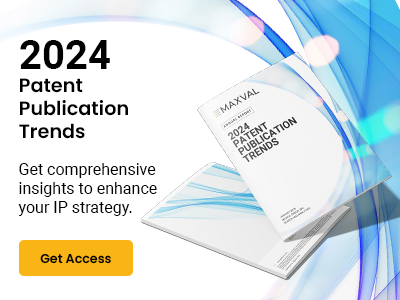Artificial Intelligence (AI) is changing the way diseases are detected, diagnosed, and treated. In precision medicine, AI-powered diagnostic tools are becoming better at analyzing clinical data accurately and efficiently. Innovation, however, is moving faster than patent law can keep up.
Patent Eligibility in the US: Walking a Legal Fine Line
In the United States, diagnostic patents have come under heightened scrutiny for patent eligibility under 35 U.S.C. § 101, especially as a result of the Mayo and Alice court decisions. Courts and patent examiners often categorize AI-based diagnostic methods as “abstract ideas,” which are not patentable unless they include new hardware or a technical improvement over earlier methods. Because of this, many patent applications for AI diagnostics technologies are rejected for lacking subject matter eligibility, even though they have great clinical value.
Case Study: US-11386553-B2 – “Medical Image Data”
This patent exemplifies the challenge of securing protection for AI-driven diagnostics in the U.S. The application, filed by Siemens Healthcare GmbH and NYU, focuses on AI-powered medical image processing for detecting tendon abnormalities using neural network-based classification techniques. Despite its potential to improve diagnostic accuracy, the USPTO issued a non-final rejection under 35 U.S.C. § 101, citing that:
“Claim 14 was rejected under 35 U.S.C. § 101, as the examiner determined it was directed to an abstract idea […] not tied to a technological act, environment, or machine, and therefore lacked a practical application producing a concrete, useful, and tangible result.”
This reflects a common challenge faced by AI diagnostics patents—the innovation lies in data analysis and interpretation, which examiners often classify as abstract unless it leads to a novel technical implementation or an improvement in computer functionality.
Patent Eligibility across Jurisdictions: How AI Diagnostics Fare in the U.S. vs. Europe
When it comes to patenting AI-driven diagnostics, geography matters—a lot. While U.S. examiners wrestle with Section 101’s “abstract idea” hurdle, the treatment is different in Europe.
The European Patent Office (EPO) offers another less abstract approach. If your AI invention delivers a technical effect—think faster diagnostics, fewer false positives, or seamless integration with cutting-edge medical devices—you’re already speaking the EPO’s language. In fact, by focusing claims on these real-world technical benefits, not just algorithms, applicants can unlock far stronger protection across the EU.
Source: EPO Guidelines for Examination, 2024
Case Study 2: EP-3657433-B1 – “Medical Image Data”
The European counterpart to US11586553B2 received an entirely different treatment. Instead of being dismissed under abstract idea principles, the EPO rejected the claims under Article 54 EPC, citing prior art (D1) that disclosed similar AI-based medical image processing methods.
Specifically, the EPO examiner found that Claim 14 was not novel, stating:
“The present application does not meet the requirements of Article 52(1) EPC, because the subject-matter of claims 1, 14, and 15 is not new in the sense of Article 54(1) and (2) EPC.”
Unlike the USPTO’s rejection based on abstractness, the EPO acknowledged the method as technical, but ruled that it lacked novelty because similar processes had already been documented in earlier publications.
AI-driven diagnostics patents face stricter scrutiny in the U.S., with 50–60% rejection rates, largely due to § 101 abstract idea challenges. In contrast, Europe evaluates AI patents based on novelty and technical effect, granting more applications if they demonstrate tangible improvements. As such, the EPO sees a steady growth in AI filings, with over 2,000 patents related to neural networks, reflecting a more innovation-friendly approach.
Source: What % of AI patents get denied – US vs EPO’s Scenario
Understanding how different jurisdictions assess AI diagnostic patents can help inventors better position their applications. Here’s a comparison of how the U.S. and European patent systems approach key aspects of patent eligibility in the context of AI diagnostics:
| Eligibility Criteria | U.S. (USPTO) | Europe (EPO) |
|---|---|---|
| Abstract Ideas | Often rejected under § 101 if claims are seen as abstract or involving only data analysis. | Not necessarily a barrier – the focus is on whether the invention achieves a technical effect. |
| Technical Implementation | Must show a novel and concrete technical solution (e.g., hardware use, system improvement). | Required, but a technical contribution can be software-based if it improves a technical process. |
| Data Analysis or Algorithms | Frequently seen as non-patentable unless tied to a specific, novel application or technical improvement. | Patentable if the algorithm contributes to a technical purpose (e.g., more accurate medical diagnosis). |
| Inventorship Rules | AI cannot be named as an inventor; only natural persons can. | The same rule applies: AI is not considered an inventor. |
| Claim Strategy Flexibility | Narrower path; needs careful drafting to survive § 101 scrutiny. | More room to claim diagnostic improvements, especially when linked to a medical device or measurable effect. |
Path Ahead: Aligning Innovation with Protection
AI is no longer a futuristic concept in medicine; it is already transforming how diagnostics are conducted and how care is tailored to individual patients. To fully realize its potential, however, inventors must navigate a complex and evolving intellectual property landscape.
At MaxVal, we go beyond patent searches, providing strategic guidance on global patent protection. Our expertise in prior art and patent landscapes helps clients understand where patenting is easier and where challenges arise. By analyzing jurisdictional trends and eligibility criteria, we assist in identifying favorable filing strategies. Whether navigating AI diagnostics or complex markets, we ensure strong, defensible IP protection worldwide.




